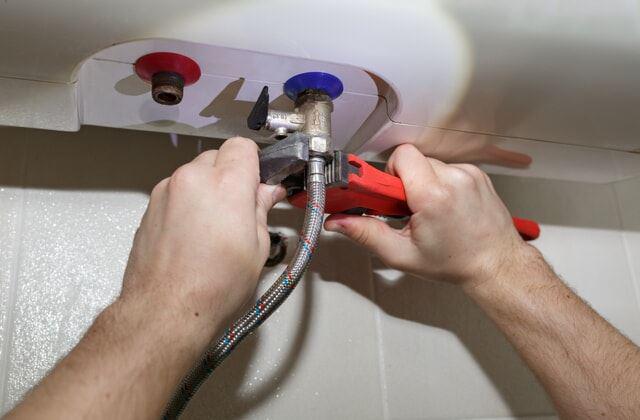Ways to Maintain Your Home's Hot Water System in Good Condition
Ways to Maintain Your Home's Hot Water System in Good Condition
Blog Article
We've found this great article on Tips For Maintaining Your Hot Water Heater listed below on the internet and decided it made perfect sense to relate it with you in this article.

Warm water is necessary for everyday convenience, whether it's for a revitalizing shower or cleaning meals. To guarantee your warm water system runs successfully and lasts much longer, normal maintenance is key. This short article provides useful tips and understandings on just how to maintain your home's hot water system to avoid disruptions and costly repair work.
Introduction
Maintaining your home's hot water system might seem daunting, but with a few easy steps, you can ensure it operates smoothly for many years to come. This guide covers everything from recognizing your warm water system to do it yourself upkeep pointers and recognizing when to employ specialist assistance.
Value of Preserving Your Hot Water System
Regular maintenance not only expands the life-span of your warm water system however likewise ensures it operates efficiently. Neglecting upkeep can bring about decreased efficiency, higher power expenses, and even premature failure of the system.
Indicators Your Warm Water System Requirements Maintenance
Knowing when your warm water system requires interest can avoid major concerns. Watch out for indications such as inconsistent water temperature level, unusual noises from the heating system, or corroded water.
Understanding Your Warm Water System
Prior to diving into maintenance jobs, it's valuable to comprehend the basic parts of your warm water system. Generally, this includes the hot water heater itself, pipes, anode rods, and temperature level controls.
Regular Monthly Maintenance Tasks
Normal regular monthly checks can help capture minor issues prior to they escalate.
Purging the Hot Water Heater
Flushing your hot water heater eliminates sediment build-up, improving performance and extending its life.
Checking and Changing Anode Rods
Anode rods protect against rust inside the tank. Evaluating and replacing them when worn out is vital.
Examining and Readjusting Temperature Settings
Readjusting the temperature setups guarantees optimum performance and safety.
Do It Yourself Tips for Maintenance
You can do several upkeep jobs yourself to maintain your hot water system in leading condition.
Looking for Leaks
On a regular basis inspect pipelines and links for leaks, as these can bring about water damages and higher costs.
Evaluating Stress Relief Valves
Examining the stress relief valve guarantees it functions appropriately and avoids excessive stress buildup.
Shielding Pipes
Shielding hot water pipelines decreases warmth loss and can save power.
When to Call an Expert
While DIY maintenance is valuable, some issues need professional know-how.
Complex Concerns Requiring Specialist Help
Instances consist of major leaks, electric troubles, or if your water heater is regularly underperforming.
Regular Specialist Maintenance Advantages
Expert upkeep can consist of comprehensive assessments, tune-ups, and making sure conformity with safety and security standards.
Conclusion
Routine maintenance of your home's hot water system is crucial for efficiency, durability, and price savings. By complying with these pointers and knowing when to look for expert aid, you can ensure a reputable supply of warm water without unexpected disruptions.
How to Maintain an Instant Hot Water Heater
Before tinkering with your hot water heater, make sure that it’s not powered on. You also have to turn off the main circuit breaker and shut off the main gas line to prevent accidents. Also turn off the water valves connected to your unit to prevent water from flowing into and out of the appliance. 2. When you’re done, you have to detach the purge valves’ caps. These look like the letter “T†and are situated on either side of the water valves. Doing so will release any pressure that has accumulated inside the valves while at the same time avoid hot water from shooting out and burning your skin. 3. When the purge valves’ caps are removed, you have to connect your hosing lines to the valves. Your unit should have come with three hoses but if it didn’t, you can purchase these things from any hardware or home repair shops. You can also get them from retail stores that sell water heating systems. Read the user’s manual and follow it to complete this task properly. When the hosing lines are connected, open the purge port’s valves. 4. You should never use harsh chemical cleaners or solutions when cleaning your unit. Make use of white vinegar instead. It should be undiluted and you’ll probably use about 2 gallons. 5. Now flush your water heater. This task should probably take about 40 minutes. We can’t give you specific directions for this because the procedure is carried out depending on the type, model and brand of your heater. With that being said, refer to the user’s manual. 6. When you’re done draining the unit, you have to turn off the purge port valves again. Remove the hosing lines that you earlier installed on each of the water valves. Put the valve caps (purge port) back in their respective places and be very careful so as not to damage the rubber discs that are found inside these caps. 7. Now that everything’s back in place, check your user’s manual again to find out how to reactivate your water heating system. 8. Once it is working, turn one of your hot water faucets on just to let air pass through the heater’s water supply pipes. Leave the tap on until water flows smoothly out of it. https://www.orrplumbing.com/blog/2014/september/how-to-maintain-an-instant-hot-water-heater/

Hopefully you enjoyed our section about Tips on Maintaining a Water Heater. Thank you so much for spending some time to read our short article. Those who enjoyed reading our blog posting kindly remember to pass it around. We recognize the value of your readership.
Request Estimate Report this page